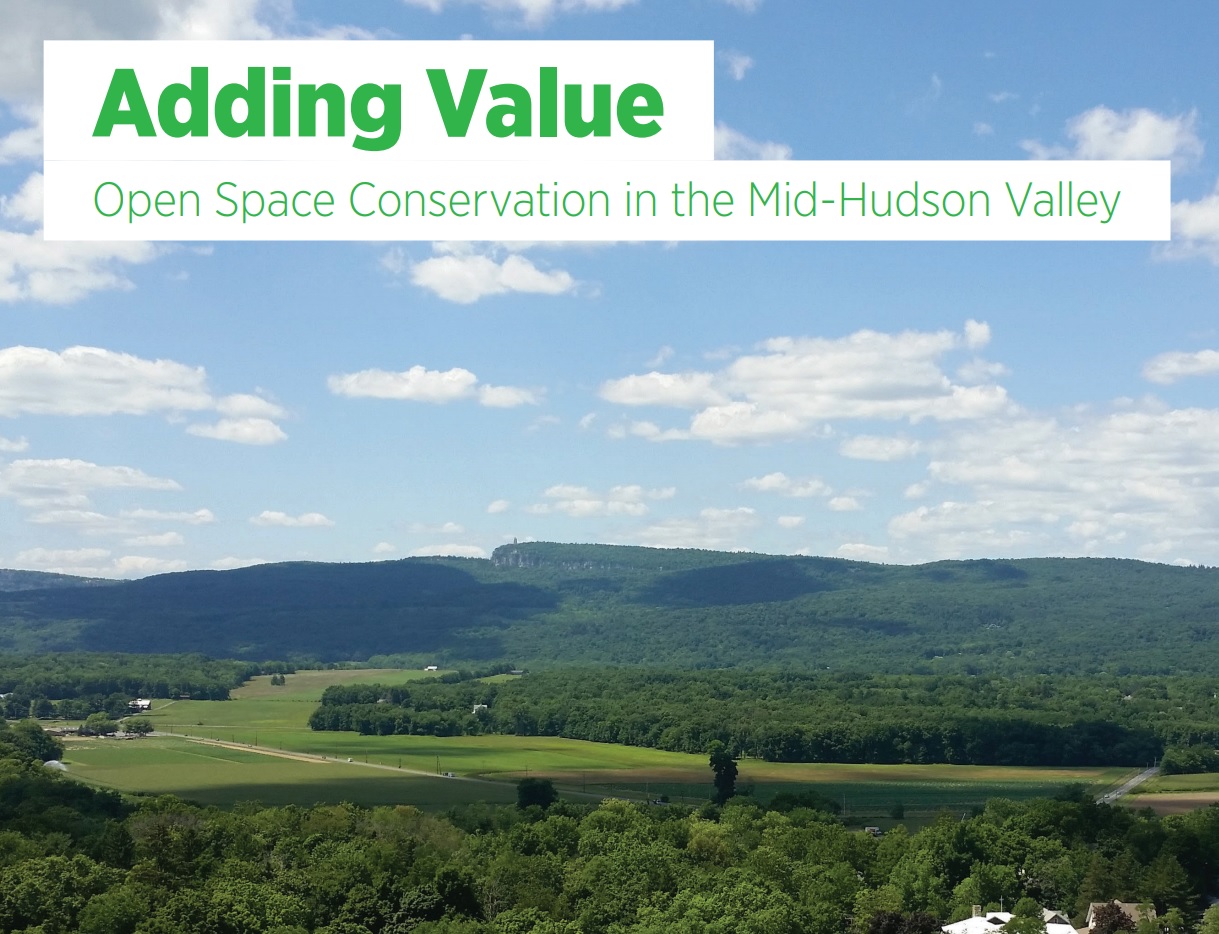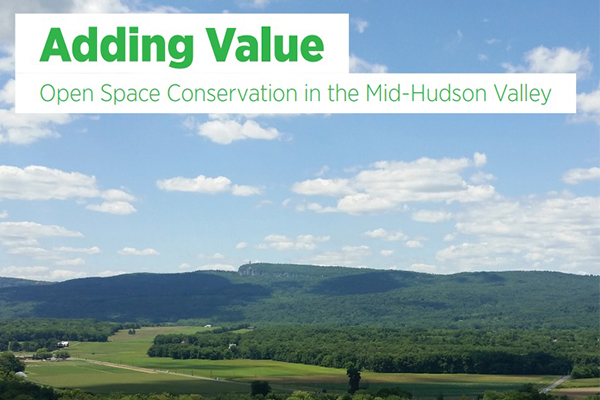New SUNY New Paltz study measures value of open space in the Mid-Hudson Valley

SUNY New Paltz, in collaboration with the Regional Plan Association, has completed a multi-year study measuring the value of open space in the Mid-Hudson Valley, including the direct and indirect environmental, economic, quality-of-life and stewardship benefits that land protection provides to localities and the greater region.
“Adding Value: Open Space Conservation in the Mid-Hudson Valley” finds that the ecosystem benefits of protected and unprotected space in Orange, Dutchess, Ulster and Putnam Counties are worth approximately $3.5 billion, with more than two-thirds of that value generated by unprotected open space.
The measured benefits include climate regulation, disturbance regulation, water quality and management, pollinator support and biodiversity.
Based on these findings, the report concludes that communities should prioritize the protection of land that is most critical for adapting to a changing climate; adopt smart growth policies in the region’s municipalities that will concentrate growth in town centers; and create a Tri-State Trail network with connections in the Mid-Hudson Valley.
“We will continue to see increased development pressure in our region that will impact the quality of our land, air, and water,” said KT Tobin, the lead researcher on the project. “If we are to continue to benefit from open space and ensure future lands are protected, we need to raise awareness of its substantial value. Commitment is needed not only to protect open space, but also to productive farmland that creates economic and open space synergies.This project seeks to nurture shared understanding and commitment, suggests improvements in state and local policies, and demonstrates how we may more fairly share the cost of sustaining open space for our posterity.”
The research took an independent look at the costs and benefits of open space protection, including the impact of tax exemption, in the four counties. There are 400,000 acres of protected and 1.25 million acres of unprotected open space in these counties; this constitutes 36 percent of the total forest cover and 34 percent of the total agricultural lands in the 31-county, New York-New Jersey-Connecticut metropolitan area.
Stewards of these Mid-Hudson Valley spaces include the public, state and local governments, and non-profit land trusts. The study found that 56 percent of the 109 municipalities in the surveyed area either have open space plans or refer to open space in their comprehensive plans or land use regulations, but also noted a significant decline in land protection referenda at the local level since 2008.
From 2000 to 2008, the great majority of public referenda permitting local governments to protect open space through the purchase of land or easements were approved by voters, protecting an estimated 7,500 acres at an average cost of about $5,000 per acre.
But no municipalities have put land preservation referendum measures before the public since 2008, partially because the requirements of the tax cap create a disincentive for municipalities to protect open space through this type of spending. In addition, non-profit land trusts have been highly scrutinized because the land they protect is tax exempt, but this study finds the land they own represents less than 1% of all exempt property value in the four counties.
The analysis recommends six specific actions state government can take to increase and restore local government’s capacity to protect open space, expand public knowledge of the actual character and impact of property tax exemptions on local governments, elevate the visibility of the continued use of exemptions as a state policy tool, and achieve equity in state policy for offsetting the local impact of exemptions.
The complete report from SUNY New Paltz and the Regional Plan Association can be accessed at http://library.rpa.org/pdf/RPA-Adding-Value.pdf.
For further information contact Christine Wilkins at [email protected] or (845) 257-2901.

